Patterns of bricks on sidewalks of Amsterdam
Over the past few days, I’ve become quite interested in patterns of bricklaying on the sidewalks and streets of Amsterdam. There seem to be 4 major ways in which the bricks are laid out:
 The four major brick patterns
The four major brick patterns
Patterns numbered 1 to 3 are the staple of all streets and sidewalks. It might not be red bricks everywhere, but they inevitably conform to one of these arrangements.
Pattern 4 only seems to be used for temporary repairs around construction sites. On a recent trip to Enschede1, I came across a 3-brick variant of the same pattern:
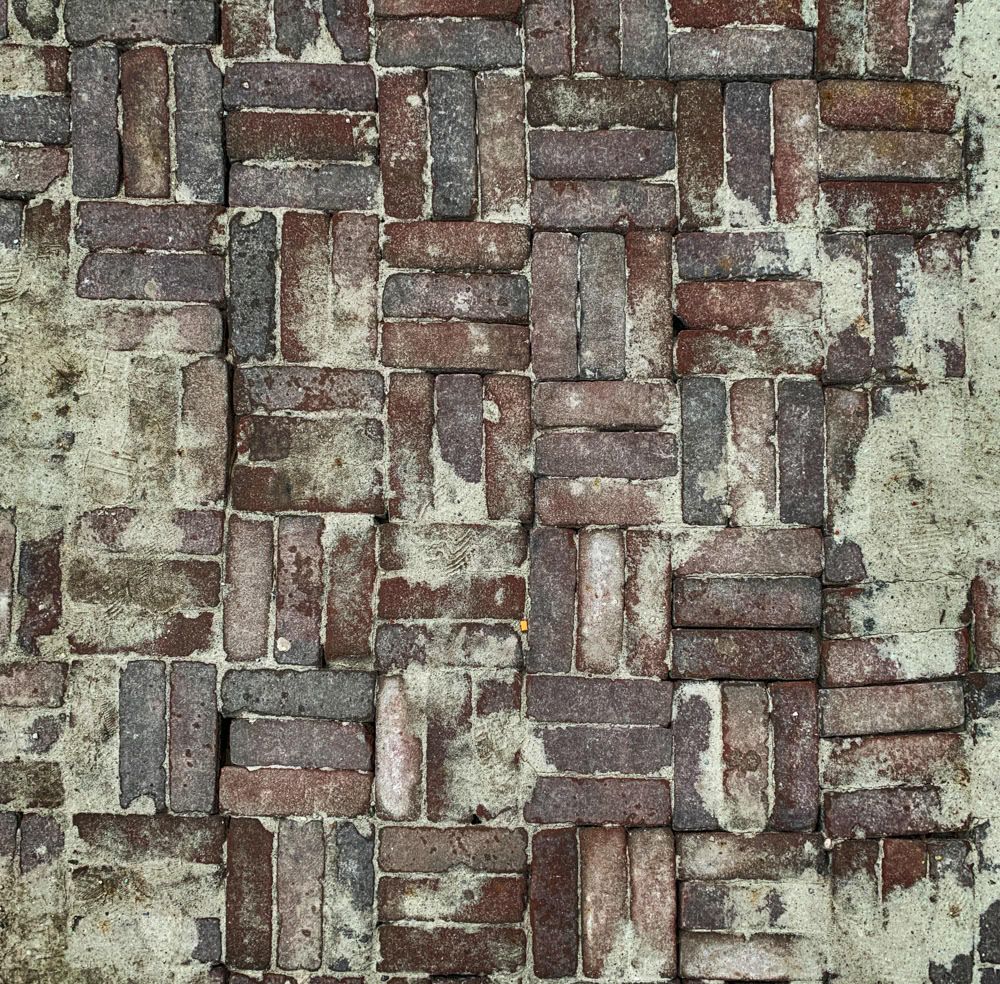 Crosshatch?
Crosshatch?
Again, only around a large construction site.
Recently, while looking at the pattern around a bend2, I realised that pattern 2 is simply pattern 1 rotated ±45º.
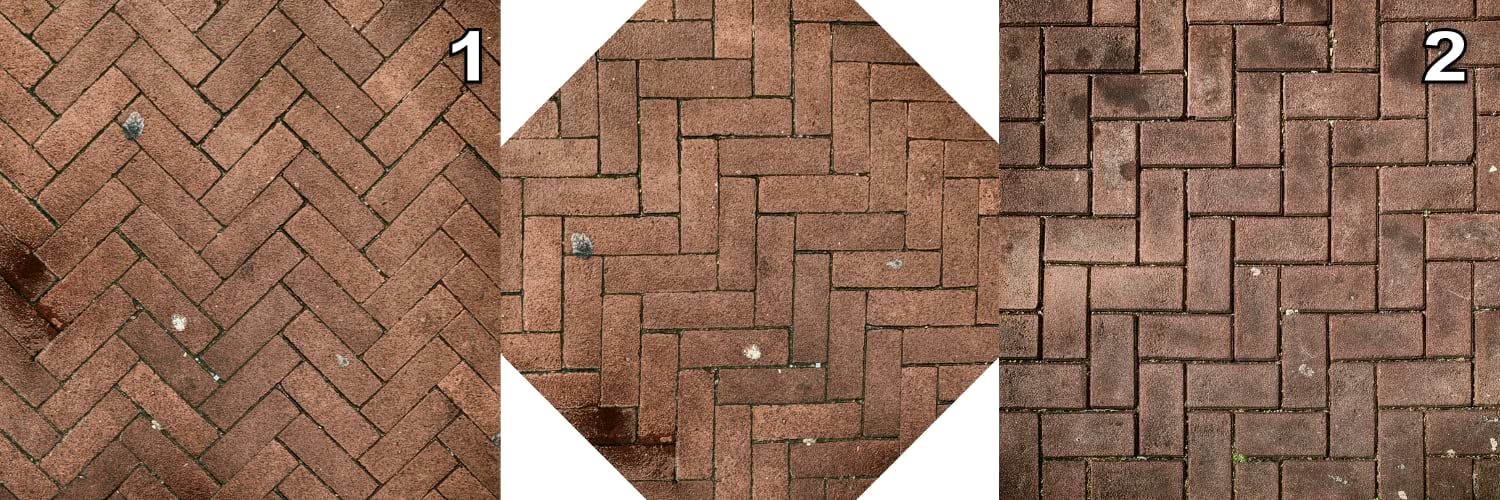
Another fascinating aspect is the way in which two or more patterns come together on the same street. In the old city center around the canals, it’s usually to demarcate the road from the sidewalk and parking.
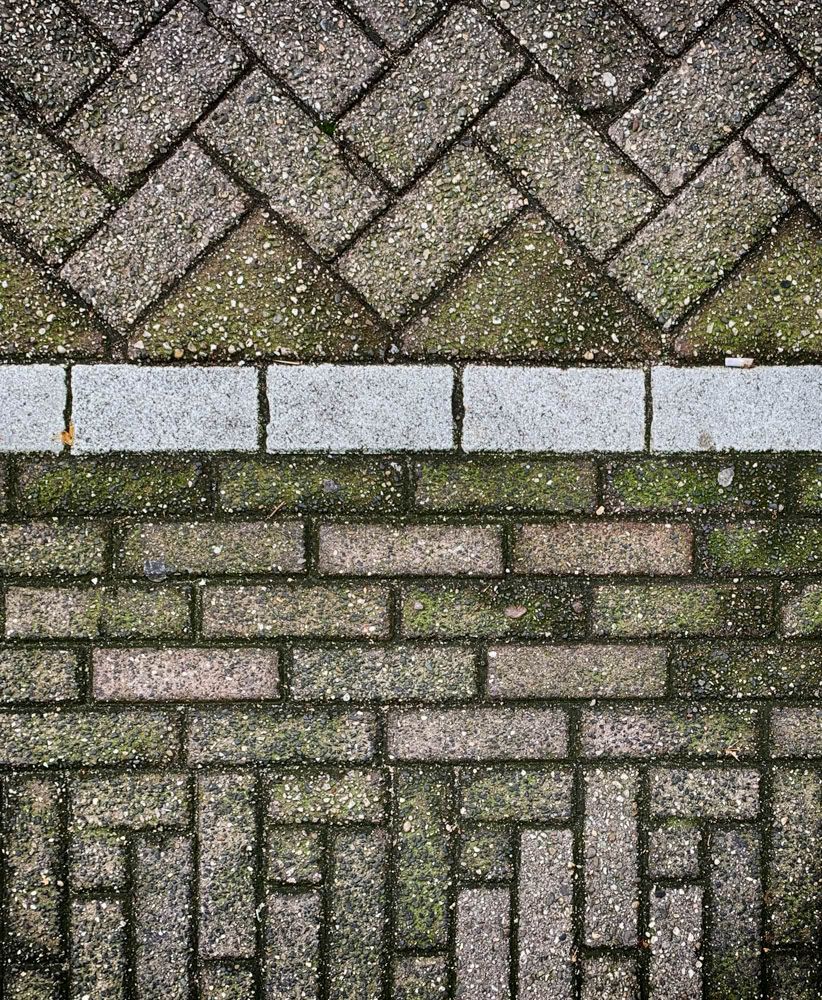 Patterns combine
Patterns combine
Finally, sometimes different coloured bricks are used (or painted) to mark crossings and intersections.
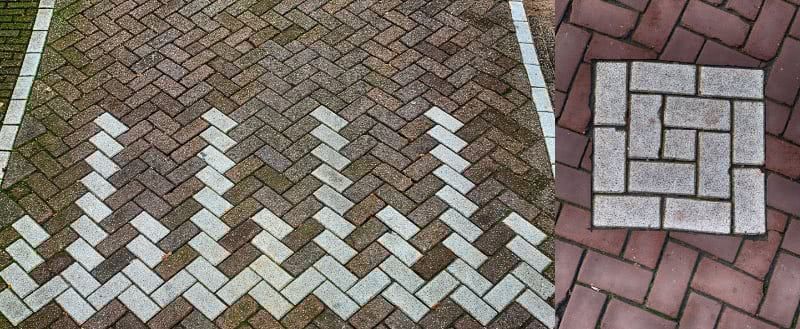 Traffic markings
Traffic markings
It’s been an enjoyable exercise to recreate them programmatically3:

I’ve used a random shade of grey for each brick, but by varying the colour a bit more predictably (say based on a mathematical function like sine or cosine), some interesting local patterns emerge within the rectangular whole.
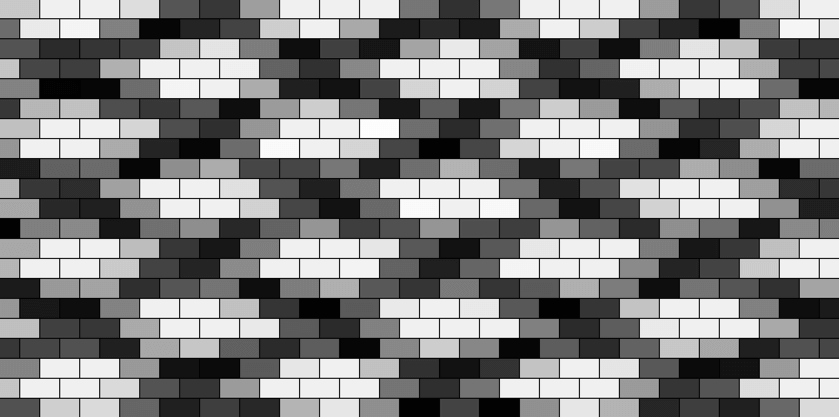
The possibilities for generative art seem endless, especially if I were to throw in more colours and animation into the mix.
The things you pick on when you are paying attention. I now also have a lot of questions.
- Are there proper nouns to describe these patterns?
Update 19 Oct: Yes - since bricklyaing is as old as civilisation itself, words exist to describe these patterns: 1: 45º Herringbone 2: 90º Herringbone 3: Running Bond 4: Double Basketweave
- Is there a reason that they occur with the relative frequencies that they do? For example, are there underlying economic or temporal considerations that affect the choice of patterns for a given street?
- Are some patterns faster to lay than others?
- Do some patterns consume fewer bricks than others?
- Is the choice of a pattern merely driven by aesthetic considerations such as maintaining homogenity with what was originally used in a street (which might’ve been an arbitrary decision back then)?
- Do bricklaying machines allow you to pick one? Do they have a default that ends up becoming the dominant pattern in use?
- Why is the same pattern sometimes created with bricks of different height:width ratio (1:2 vs 1:3, to say nothing of their depth)?
I wish there were an atlas of sidewalk brick patterns for Amsterdam. Perhaps, in a not so distant future, high resolution statellite imagery coupled with computer vision would allow us to create one automatically.
A sleepy town in eastern Netherlands some two hours train ride from Amsterdam.↩︎
Much to the annoyance of the wife. One moment I am walking alongside her, the next I am glued to the sidewalk staring down hard, smiling to myself.↩︎
I used Processing.py and will update this footnote once I publish the code.↩︎